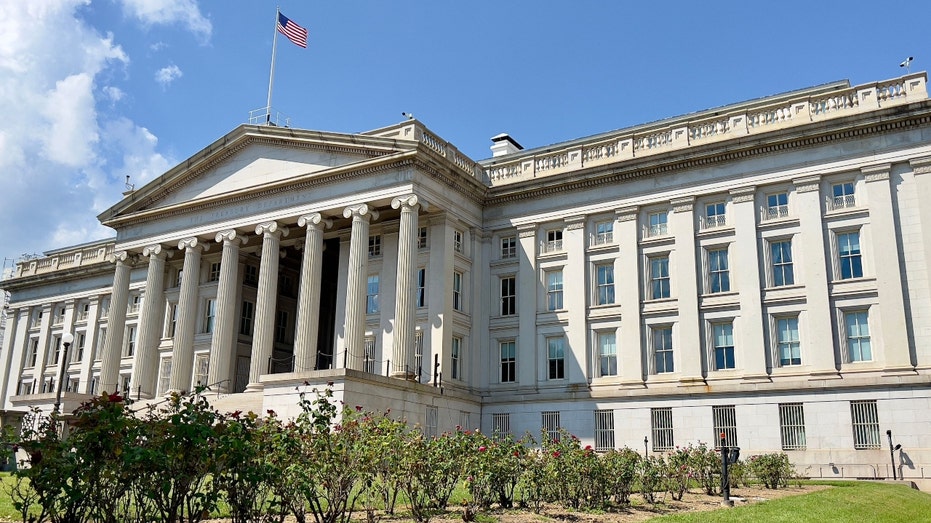US debt ceiling will require Treasury 'extraordinary measures' to avoid default
Debt ceiling of $31.38 trillion will be reached Jan. 19, Treasury Secretary Janet Yellen says
Dan Clifton on debt ceiling: 'A lot of Republicans' won't support raising it
Strategas partner and head of policy research Dan Clifton says Republicans have to start crafting a 'unified' debt ceiling plan now.
Treasury Secretary Janet Yellen disclosed the debt bomb on Friday noting the government will reach that ceiling next week on Jan. 19 when the debt balloons to $31.38 trillion.
"Once the limit is reached, Treasury will need to start taking certain extraordinary measures to prevent the United States from defaulting on its obligations," she said while listing two of those measures.
Treasury's ‘extraordinary measures’
- Redeeming existing, and suspending new, investments of the Civil Service Retirement and Disability Fund (CSRDF) and the Postal Service Retiree Health Benefits Fund (Postal Fund)
- Suspending reinvestment of the Government Securities Investment Fund (G Fund) of the Federal Employees Retirement System Thrift Savings Plan
JAMIE DIMON SOUNDS ALARM ON RISING DEBT HAVING ‘POTENTIALLY DISASTROUS OUTCOMES’

The Department of the Treasury building in Washington, D.C., Aug. 29, 2022. (Daniel Slim/AFP via Getty Images / Getty Images)
Extraordinary measures are accounting and budgetary tools the Treasury Dept. uses to avoid until Congress takes action on the debt limit to let the federal government resume borrowing. They don't last forever, and their duration depends on how much the government is spending. Yellen did note while there is much uncertainty, "it is unlikely that cash and extraordinary measures will be exhausted before early June."
FOX Business takes a deep dive into the situation and the measures that are aimed at staving off the threat of default.
What is the debt ceiling?
The debt limit or debt ceiling is the total amount of money that the United States government is authorized to borrow to meet its existing legal obligations, including Social Security and Medicare benefits, military salaries, interest on the national debt, tax refunds, and other payments, the Treasury Department detailed.
The limit was boosted to approximately $31.381 trillion on Dec. 16, 2021.
HHS, Treasury Dept. officials traded stocks at onset of COVID-19 pandemic: WSJ report
The Wall Street Journal investigative reporter Rebecca Ballhaus on government officials allegedly trading stocks in companies that were affected by COVID-19 policies on 'The Evening Edit.'
Government Securities Investment Fund, or the G Fund
The Government Securities Investment Fund, known as the G Fund, is a money market retirement fund for federal employees enrolled in the Thrift Savings Plan (TSP) that gets invested in special-issue Treasury securities that mature daily and are typically reinvested. The G Fund's balance was about $210.9 billion as of Dec. 31, 2022.
When the federal government is operating at the debt limit, the Treasury Dept. has the authority to stop fully investing in the G Fund from day to day to prevent it from exceeding the debt limit. For example, if the Treasury wants to create $10 billion of space under the debt limit to allow the agency to sell more debt securities to the public that finance federal spending, it would simply not invest that amount on a given day.
After the debt limit is either raised or suspended, the G Fund is required to be made whole with interest, so federal employees and retirees who invest in it through the TSP are ultimately unaffected despite the accounting maneuvers.
US NATIONAL DEBT ON PACE TO BE 225% OF GDP BY 2050, PENN WHARTON SAYS

U.S. Treasury Secretary Janet Yellen (REUTERS/Jonathan Ernst / Reuters Photos)
Federal pension adjustments to retirees, postal workers
Treasury can also declare a "debt issuance suspension period" during which the agency delays some of its accounting moves to free up cash during a specific window of time. During this period, the agency can suspend making new investments and redeem certain existing investments in a pair of federal pensions.
It affects the Civil Service Retirement and Disability Fund (CSRDF), which is the main pension fund for federal employees; in addition to the smaller Postal Service Retiree Health Benefits Fund (PSRHBF), which funds the healthcare expenses of retired Postal Service employees. Both funds are invested in special-issue Treasury securities.
GET FOX BUSINESS ON THE GO BY CLICKING HERE
The Treasury Dept. noted in August 2021 that each month of a debt issuance suspension period frees up temporary headroom of about $7 billion from the CSRDF plus about $300 million from the PSRHBF through the early redemption of investments in those funds. At the end of the suspension period, the net increase in budgetary headroom goes away because those securities would've matured at that date.





















